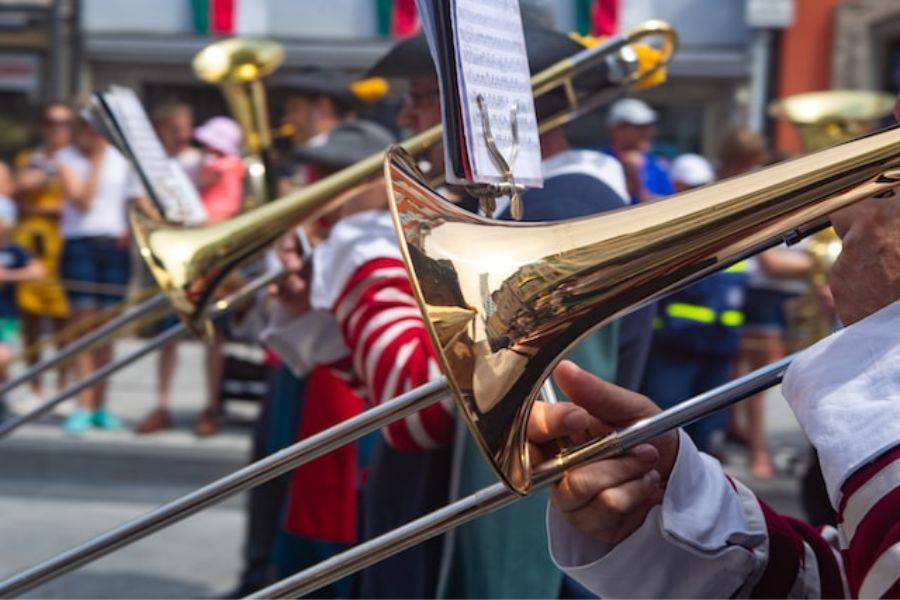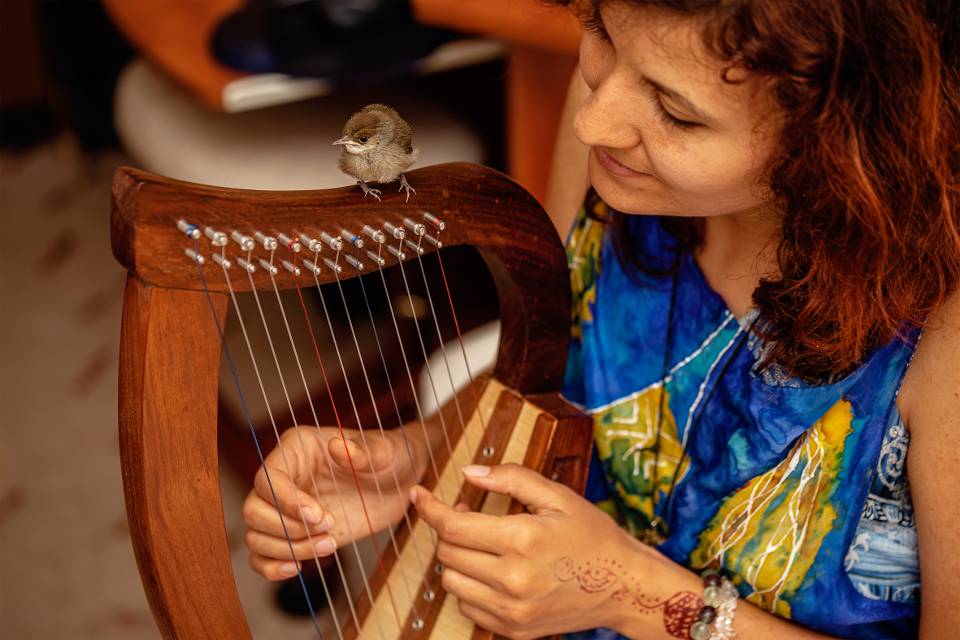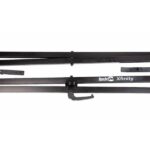There are many guidelines on the internet on how to clean a harmonica.

However, in most of these guides, you have to take the harmonica apart and clean it before reassembling it.
Cleaning a harmonica without taking it apart requires a delicate process. Because the interior part of the instrument is so fragile, it has to be done the right way.
With the right approach, you can effectively remove dirt, debris, and moisture from the instrument.
Contents
Can You Clean a Harmonica Without Taking It Apart?
Generally, it depends. Harmonicas are typically constructed as sealed units to ensure proper airtightness and functionality.
This design helps maintain structural integrity and prevent air leaks, allowing the instrument to produce clear and consistent sounds.
Whether or not you can clean a harmonica without taking it apart depends on the type. Most standard diatonic harmonicas cannot be easily taken apart for cleaning.
Standard diatonic harmonicas have a sealed construction, where the reed plates, cover plates, and comb are all permanently assembled.
This design makes them more airtight and durable for regular playing. However, it also means that they cannot be disassembled for cleaning.
For instance, popular diatonic harmonicas cannot be taken apart. Like the Hohner Special 20, Lee Oskar harmonicas, Suzuki Bluesmaster, and Seydel Session Steel.
However, even though these harmonicas cannot be disassembled, you can still clean them using techniques that do not require disassembly.
Some harmonicas can be taken apart for cleaning. These types of harmonicas are disassemblable or modular harmonicas.
They have been designed with removable components to allow for easy cleaning and maintenance.
One popular example of a disassemblable harmonica is the Hohner Marine Band Deluxe. It features a design that allows you to unscrew the cover plates, reed plates, and comb.
Hence, it is easier to access the individual parts for cleaning and maintenance. Another example is the Seydel 1847 Classic.
How Do You Clean Your Harmonica Without Taking It Apart?
Even though standard harmonicas may not be designed to be taken apart, they can still be cleaned to some extent.
Here’s a step-by-step guide to cleaning a harmonica without disassembling it.
Gather the Necessary Tools and Supplies
You’ll need:
- A soft cloth or microfiber cloth for wiping the exterior of the harmonica.
- Small brush such as a toothbrush with soft bristles or a specialized harmonica cleaning brush. This is useful for cleaning the reeds, comb, and other hard-to-reach areas.
- Compressed air can be handy for blowing out loose particles and dust from the harmonica’s interior. It can be in the form of a can of air with a regulated pressure suitable for delicate instruments.
- Isopropyl alcohol (also known as rubbing alcohol) can be used to disinfect and sanitize the harmonica. Dilute it with water if necessary and use it sparingly.
- Warm water is useful for cleaning the mouthpiece and the exterior of the harmonica. Avoid using hot water, as it can damage the harmonica.
- Mild soap or dishwashing liquid. Ensure that it is a non-abrasive and non-oil-based soap.
- Soft toothpick or dental pick to gently remove any stubborn debris from the reed slots or gaps between the reeds.
Prepare the Harmonica
Before you begin cleaning, make sure the harmonica is dry. If it has been recently played, allow it to air dry for a few minutes. This way you can ensure there is no moisture inside.
Clean the Exterior
Start by wiping the exterior of the harmonica with a soft cloth. This will help remove any dust or dirt on the surface. Be gentle to avoid scratching the surface.
Clean the Air Channel

You do this using a small brush with soft bristles. Gently brush the air channels on the top and bottom of the harmonica.
Be careful not to apply too much pressure or bend the reeds. This will help remove any debris or dirt that may have accumulated in the channels.
Clean the Mouthpiece
If the harmonica has a removable mouthpiece, take it out and clean it separately. Use a soft cloth or a toothbrush to wipe away any dirt or moisture.
Pay attention to the area where the mouthpiece connects to the harmonica, as it tends to accumulate saliva and debris.
Blow out Debris
If you have a can of compressed air, you can use it to blow out any stubborn debris from the air channels.
Hold the harmonica in one hand, covering one set of holes with your fingers. Then, gently blow compressed air through the uncovered holes.
Rotate the harmonica and repeat the process for each set of holes. Use short bursts of compressed air to clean the slots.
Be cautious not to use excessive air pressure, as it may damage the delicate reeds.
Disinfecting
This is an optional but highly recommended process. If you want to disinfect the harmonica, dampen a soft cloth with a mild disinfectant solution.
It could be isopropyl alcohol diluted with water. Gently wipe the exterior of the harmonica. Do this with care not to let the liquid enter the air channels or reed chambers.
Dry the Harmonica
After cleaning, leave the harmonica on a clean, dry surface to air-dry. Avoid exposing it to direct sunlight or heat sources, as they can cause warping or damage.
Afterwards. wait until the harmonica is completely dry before using or storing it.
Storage
Once the harmonica is clean and dry, store it in a protective case or pouch. This would keep it safe from dust, moisture, and potential damage.
How to Make It Easier to Clean Your Harmonica Without Taking It Apart?

The internal components of a harmonica, such as reeds and valves, are not easily reachable without disassembling the instrument.
It can be challenging to clean them thoroughly without disassembly. You should take preventative steps to keep your instrument in great shape.
This way, you don’t always have to dissemble it before cleaning.
The most important measure is to avoid eating right before playing. Even if you do eat first, you should rinse your mouth thoroughly or brush your teeth before playing.
Also, when not in use, store your harmonica in a clean and dry case or pouch. This would protect it from dust, moisture, and potential damage.
Consider using a protective cover or guard over the holes of the harmonica while playing. This can help minimize the amount of saliva, debris, or dust that enters the instrument.
After each session, gently wipe the exterior of the harmonica with a soft cloth to remove any moisture or fingerprints. This will help prevent build-up and keep it looking clean.
Furthermore, hold the harmonica at a slight angle to allow any excess moisture or particles to fall out naturally.
Avoid blowing forcefully into the instrument, as this can push debris further into the reeds.
With these preventive measures, you can help keep your harmonica clean and maintain its longevity and performance.
Remember
Cleaning a harmonica without disassembling it has its limitations.
If your harmonica requires deep cleaning or repairs, you might have to consult a technician or the manufacturer for guidance.
It is possible to clean a harmonica without disassembling it to some extent.
Yet, this may not yield the same level of cleanliness and maintenance as thorough disassembly and cleaning.
Therefore, periodic disassembly and cleaning are recommended to ensure optimal performance and longevity of the instrument.






